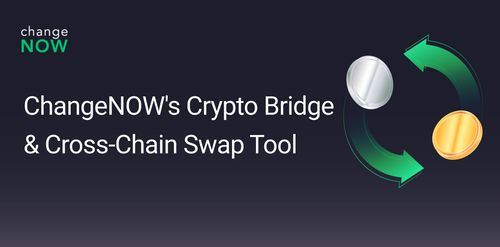Cryptocurrency and Space: New Crypto Projects Going Beyond Earth
Here’s how blockchain tech takes profit from the space infrastructure – and vice versa:
- Cryptocurrencies are used to fund space programs and companies: like DOGE-1, the first crypto-financed mission that is scheduled to launch in 2023.
- Space is a great place to deploy infrastructure that reinforces crypto technology: this way SpaceChain enables satellite-driven multisig wallets and Blockstream broadcasts the Bitcoin blockchain across the globe.
- New crypto projects may become the main means of payment and trustless value exchange on extraterrestrial settlements. Sounds like science fiction? Experts have no doubts that the colonization of space is our future, which is why now is the perfect window of time for technical fundamentals of the future civilization to be established.
Blockchain and space have a lot to offer to each other in practical terms, but there’s also a strong ideological parallel between the two: governments have no complete control over finance and space anymore. Commercial drive tends to take both industries to new heights.

DOGE to the Moon, Literally
While the whole world is excited about America's new lunar missions, the crypto community is eagerly awaiting another event: DOGE-1 campaign, the first-ever lunar and space mission fully funded by cryptocurrency, is scheduled for January 2023. In May 2021, Elon Musk announced that he would pay for the mission with Dogecoin thus putting it “on the literal moon.”

One of the best upcoming crypto projects related to space was conceived in partnership with a few companies including Intuitive Machines of Houston and Geometric Energy Corporation. It will put a 40-kilogram satellite into lunar orbit to collect information about the Moon. The machine will be launched with the SpaceX Falcon 9 rocket.
DOGE-1 was announced amid the Dogecoin rally initiated by Musk in 2021. In a Saturday Night Live show last year, he invited his mother May Musk on stage and joked (or not?) he’d give her some Dogecoin for Mother’s Day; in the same show, he acted as Lloyd Ostertag, a financial expert, and asked to call him a ‘Dogefather.’ Two days later, DOGE-1 was announced – but something went wrong and the launch was delayed a few times. We hope the announcement wasn’t just a publicity stunt and Doge will become the first crypto in space – the way mission representatives reassure.
Space Race 2.0: Current and Future Crypto Projects
Space is a $350 billion market today, and it is expected to surge to $1.4 trillion in the next 10 years. About 400 private companies are operating in space – and some of them already partner with crypto.
Here’s just one example – in September 2021, Winklevoss twins invested $650 million in Payload, a digital media company covering business, policy, and societal aspects of space. This is a quite novel approach – most journals of this kind have been consumer-focused to date, writing mostly about space travel.
The growing interest in space from private companies has been dubbed the “Space Race 2.0”. One of the industry players who supports this term is Jeff Garzik, an early Bitcoin Core engineer and the CTO of SpaceChain – a cryptocurrency space company building satellite-based blockchain infrastructure. Garzik believes that in 10 years, entrepreneurs will deploy “Antarctica-style bases” on the Moon that will be supplied with payloads from the Earth, in part thanks to upcoming crypto projects. “A three-day journey to the moon will be pretty normal,” predicts Garzik.
One of the benefits of developing the Moon is that it will make Mars missions more accessible – much less gravity has to be overcome to launch a rocket from the Moon’s surface. But what does that have to do with blockchain and space crypto companies?
Space Race and the Wild West
Currently, we’re at the earliest stages of lunar development – but when supply runs to the Moon begin, when “Antarctica-style bases” are built and rovers start streaming videos from the Moon, there will have to be some funding and infrastructure backing this emerging economy. In the 1960’s, space missions were financed by NASA and taxpayers, and today, it is the turn of private companies and crypto space agencies like SpaceChain.
Jeff Garzik, the platform’s CTO, says that the communications infrastructure on the Moon will be equivalent to phone towers linking bases in Antarctica. SpaceChain, the company that is building this infrastructure, can be thought of as a business that was constructing railroads in the Wild West of the 1800’s as the Gold Rush unfolded. Today, these railroads (communication and funding facilities) is what crypto space offers to Moon explorers.
All these metaphors proposed by Garzik and his romantic perception of lunar development are rooted in his childhood. “I’m a big sci-fi nerd,” said the engineer who fell in love with space in the 1980’s, when his father took him to watch NASA shuttle launches on Cape Canaveral.
On a more formal note, SpaceChain leverages trustless and open-source blockchain for communication and commerce in space, making it more accessible to the public. This is achieved using Decentralized Satellite Infrastructure (DSI) for blockchain – network nodes operating on satellites and aboard the International Space Station. SpaceChain allows for building satellite-based applications, smart contracts and assets; its native SPC space crypto coin enables developers to create payment apps, while users can store data and take advantage of dApps.
Here’s a few examples of SpaceChain use cases available today.
Space-protected multisig wallet
One of the most critical vulnerabilities of today’s crypto wallets is that if somebody gets access to your private keys, they gain complete control over your coins. SpaceChain has created a wallet with an extra layer of security: there’s one more private key that is stored on a satellite – a device whose laser and radio communication is exceptionally hard to hack. When a user initiates a transaction, it is signed with both Earth- and satellite-based private keys.
The wallet has been developed with the financial aid from the European Space Agency. The first transaction worth 0.01 BTC was sent in 2020.
Space infrastructure made accessible
Today’s orbit- and Moon-based infrastructure is available only to giant companies with huge capital. What’s more, its centralized nature hinders its potential in terms of secure value exchange and censorship resistance. This is where SpaceChain comes on stage – in its decentralized satellite applications (DSA) platform, anyone can create a wallet, place an order, and satellite companies will contact them, provide all necessary space data, and help analyze it.
Space Chain’s Decentralized Satellite Infrastructure gives life to space-based apps such as crypto exchanges, secure data storage, protected P2P messaging, global real-time sensor arrays, space VR, and much more. DSI binds satellites, spacecraft, and hardware into one global operating system, thus paving the way for new tech breakthroughs by “untethering innovation from the Earth.”
Despite numerous ongoing projects such as launches of new satellites into space, SpaceChain can’t boast of impressive market data: the daily trading volume dangles between $2,000-3,000, market cap is slightly below $2 million, and the SPC coin is ranked #1220. However, the new SpaceChain’s CEO plans to expand the company’s partnership to the USA (the platform is mostly Europe-based at the moment), and things may change drastically when people and capitals flood into the lunar economy.
Space NFTs
Another platform democratizing access to space economy is Copernic Space, the first Web3 marketplace for space assets. Users can buy and sell stakes in funding space missions or ownership of real assets in space. These assets are minted as NFTs and represent payload space, satellite data, and APIs.
One of Copernic Space’s success cases is the "Satellite Rhino" NFT – a project initiated by Saving The Survivors, an organization that helps preserve the rhino population in South Africa. This partnership allows using satellite imagery and tracking technologies to protect and save dwindling rhinos.
Bitcoin Streamed from Space – No Internet Required
Blockstream, a digital asset infrastructure company, broadcasts the Bitcoin blockchain around the globe for free – anyone even in the most remote regions can sync with the network, no internet needed.
All Bitcoin devotees have questioned themselves – what happens to the first cryptocurrency if the internet shuts down? Although we hope this will not be the case, there are enthusiasts who take action. Blockstream has built a web of satellites with BTC nodes in space to broadcast the Bitcoin blockchain even if the internet is damaged.

Blockstream coverage. Image source
The founder of Blockstream is a cypherpunk Adam Back, known as an inventor of a Bitcoin precursor Hashcash and seen by some as Satoshi Nakamoto himself. He brings other examples of global Bitcoin’s vulnerabilities that Blockstream Satellite helps to patch. Authoritarian regimes can potentially undermine the network; if there’s a global shutdown and card networks cease operation, critical financial needs will be put in jeopardy. Moreover, the platform allows remote areas of the Earth, where network interruptions are present or there’s no internet at all, to stay synchronized with the Bitcoin blockchain.
The head of Blockstream Satellite Chris Cook describes the platform as a “passive, receive-only service,” meaning that it doesn’t allow sending transactions – but it helps everyone stay in touch with the Bitcoin network status, protect from the ground infrastructure's flaws, and enjoy enhanced security: the user’s IP address cannot be discovered, so no one can geo-locate them.
Here’s how Blockstream Satellite works:
- Blockstream ground stations, known as 'teleports,' are the Bitcoin network members who transmit BTC blocks to satellites.
- Satellites receive the signal and broadcast it across most of the Earth.
- If you have a small satellite antenna and a simple USB receiver, you will receive Bitcoin blocks and make sure you’re synced with the network.
- In turn, ground teleports are also integrated into one network and synchronized, which ensures ‘full redundancy’ of the BTC blockchain.
One practical application of this scheme is lower-cost mining in remote areas. Blockstream uses satellites as a backup connection to Bitcoin and as a means to deliver its network to places with poor internet access – and these areas are often rich in energy sources that had never been used before. Thus, one can equip a solar power plant in a desert and mine Bitcoin there without any access to the Internet.
Space Race 2.0 Goes Decentralized
George Pullen, co-author of the book "Blockchain and The Space Economy," believes that Space Race 2.0 will not be the race as we know it – with a few superpowers competing with each other. “Space Race 2.0 is probably going to be a relay race, with people passing the baton back and forth,” says the economist. Rapidly growing extraterrestrial communities will create a sharing economy, “and the best way to set up a sharing economy is with blockchain” and new upcoming crypto projects.
Historically, space exploration was one of the most inspiring pursuits of humanity. In the period of geopolitical instability and local tensions, we hope that space missions will once again become a uniting factor for people from all over the globe. And now, as space is increasingly accessible to the public and builds connections with the enthusiastic trillion-dollar crypto industry, we may witness millions of people directly involved in the new space exploration era.



